What is Dementia?
There is a common misconception that dementia is a normal part of ageing and that is all about loss of memory - not so!
Dementia is the umbrella term describing the symptoms that occur when the brain is affected by certain diseases or conditions. There are many different types of dementia, in fact over 100, although some are more common than others such as alzheimers, vascular, lewy body and frontotemporal dementias. Dementia involves the ongoing and irreversible death of brain cells, as such it is not a normal part of ageing and it is a terminal illness which gradually gets worse. The condition often affects memory, language, understanding, thinking, and the ability for daily activities to be carried out.
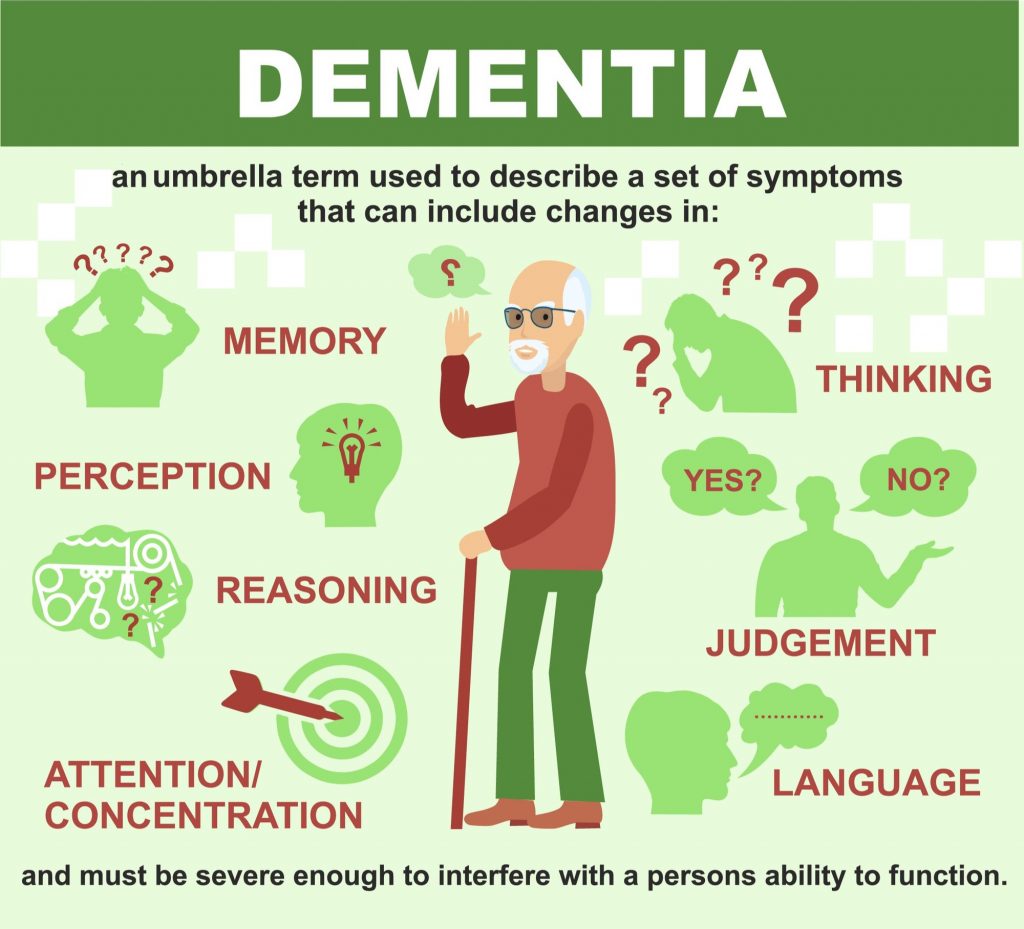
The goal is to be able to ‘live well with dementia’ such that quality of life is maintained and even improved for the person with dementia but also for their family, friends and carers. All too often, dementia is seen as leading to inactivity and immobility coupled with loss of both independence and social interaction, yet good care, complemented with good design of the physical environment can make an important and critical contribution towards living well with the condition.
We can all contribute towards making a positive difference for those affected by dementia – the person themselves, their family, friends, and carers. Polyflor is pleased to have worked with the School of the Built Environment at the University of Salford to develop their key principles for dementia-friendly flooring that meet the general guidelines set down in the 2015 Health Building Note issued by the Department of Health.
Dementia-friendly flooring is appropriate for a range of diverse settings including our own home, sheltered/extra care housing, dementia hubs and respite care, day centres, hospital/hospice environments, rehabilitation, and intermediate care facilities as well as residential care/nursing home environments. As such, the Salford Institute for Dementia at the University of Salford, in conjunction with Polyflor Ltd has developed the principles overleaf to support the implementation of the Department of Health HBN 08-02 (2015), the British Standard PAS 1365: 2015, and the British Standard 8300 (2009) + A1 (2010). The newly developed principles cross-reference back to these documents where appropriate. These principles are aimed at designers and specifiers of flooring to assist with the implementation of dementia-friendly environments.
10 PRINCIPLES FOR DEMENTIA-FRIENDLY FLOORING
1: Develop one continuous flooring surface
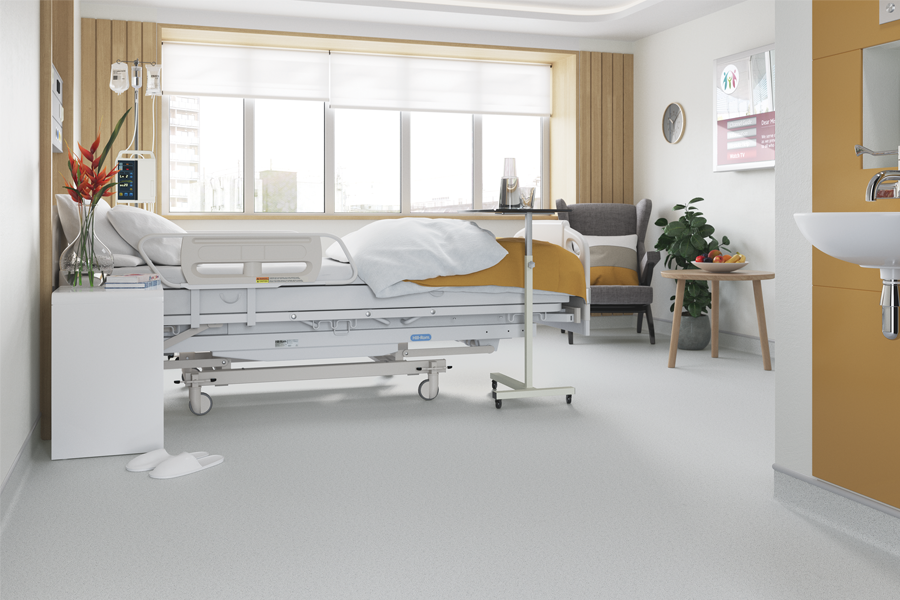
Tonal contrast of flooring is important and is more than just the colour (hue) of the product. Ideally, the floor needs to be both seen and experienced as one continuous surface. Choosing flooring products in adjacent areas with similar tones and light reflectance values (LRV) that are close to each other is therefore important.
A large tonal contrast between two adjacent floor surfaces could be perceived as a step and cause confusion for those living with dementia. Threshold strips between two floor surfaces should match the tones of both surfaces. Similarly, barrier matting should blend tonally with adjacent flooring. [Meets Design Principles 1, 3, 4, 5, 6 and 9 in DH HBN 08-02]
2: Careful use of tonal contrast
If there are changes in flooring between areas used by people with dementia and those that are staff only areas, a large tonal contrast may be beneficial in providing a visual barrier. Similarly, the flooring can be used to highlight main features of a room by having a good tonal contrast with walls and skirting, fixed and loose furniture and sanitaryware.
As a rule of thumb, the light reflectance value (LRV) should be 30 points difference between surfaces in order to get good tonal contrast (BS 8300 S 9.1.1). Additionally, being consistent in the use of materials, finishes and colours to differentiate room and space function is an important consideration. [Meets Design Principles 1, 3, 4, 5, 6 and 9 in DH HBN 08-02]
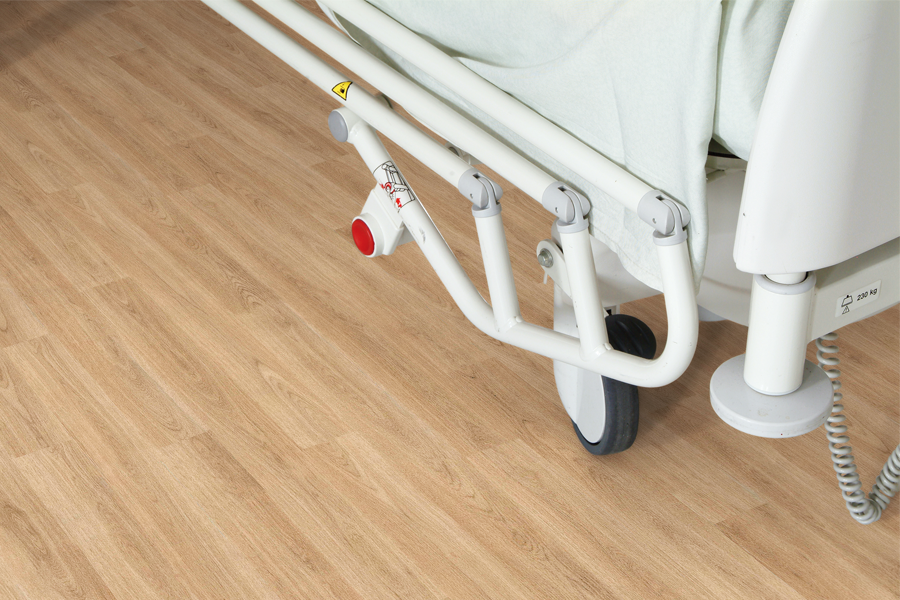
3: Reduce impact sound
The acoustics of environments used by people with dementia should strike a careful balance between the environment being over stimulating with unwanted noise and being too sound-absorbent that the space in monotonous. Choosing flooring products with acoustic absorption properties can help soften hard and noisy environments and reduce impact sound levels between rooms.
[Meets Design Principles 2 and 4 in DH HBN 08-02]

4: Accentuate colours to give depth
Using strong hues / colours will give more depth to a room than paler shades and this can help in the perception of the size and shape of rooms to aid wayfinding. People with dementia can find that rooms appear two dimensional if the colours are subdued, particularly if their vision is compromised. Avoid very dark colours as these may be perceived by the person with dementia as holes to fall into, or the dark colours may trigger emotions of imprisonment.
[Meets Design Principles 2, 4, 6 and 9 DH HBN 08-02]

5: Avoid sensory overload and false steps
Using flooring products without too many differing colours and patterns in the design or textures on the floor is important. Similarly, avoid inlaid logos and bands, as well as strong and contrasting grout lines in the flooring finish. Flooring which contributes to sensory overload can confuse the eye and cause a person with dementia to perceive a false step, an obstacle, a hole, or to see the pattern as something it is not (for example, blue swirls as a pattern in a floor may be interpreted as water). This can deter people with dementia from walking across the floor safely without getting distracted, causing disorientation and putting them off balance.
[Meets Design Principles 1, 3 and 9 in DH HBN 08-02]
6: Reduce sparkle
Using flooring products without any sparkle or shimmer effect in their design is important as these may be perceived by a person with dementia as being a wet floor surface, which can affect their gait and provide a slip risk. [Meets Design Principles 1 and 3 in DH HBN 08-02]
7: Promote the use of a matt floor finish
A matt appearance to flooring, rather than shiny, will reduce problems of glare, or creating pools of reflected light from the overhead light fittings. Glossy surfaces may be perceived by a person with dementia as slippery or wet and this can lead to confusion and anxiety.
[Meets Design Principles 1 and 3 in DH HBN 08-02]
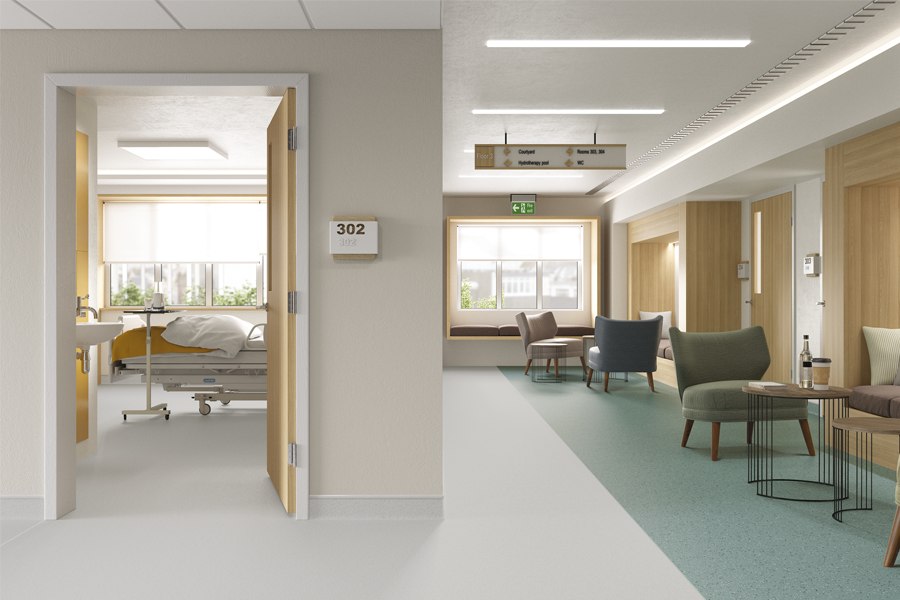
8: Blend flecks with the tone of the main floor surface
Where speckles or secondary flecks are being used in the floor material then avoid those with a high tonal contrast between the secondary flecks and the main floor tone. People with dementia may interpret the flecks as pieces on the floor surface and try to pick them up to throw away. Solid colour, or flooring with subtle tonal secondary flecks is preferable.
[Meets Design Principles 1 and 2 in DH HBN 08-02]
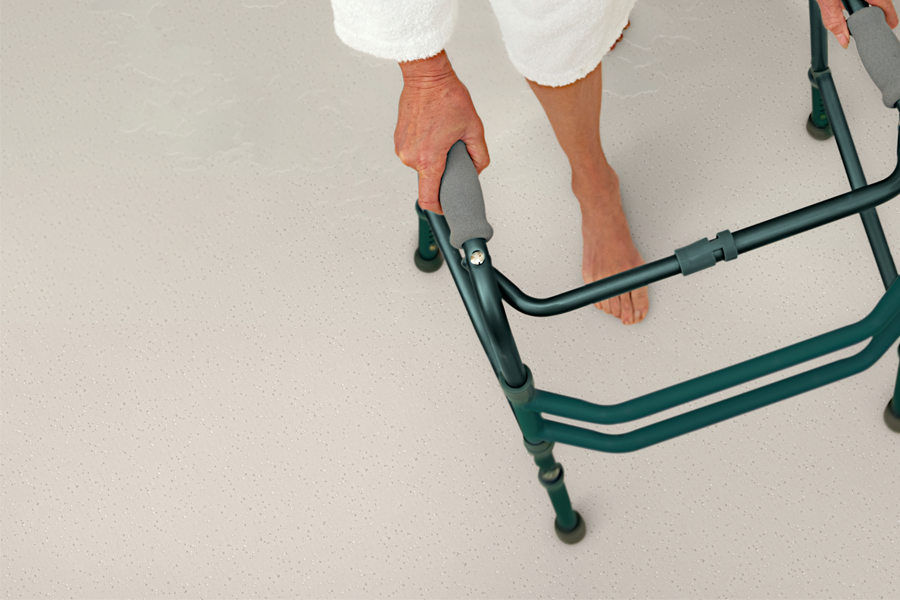
9: Avoid unpleasant smells and odours
Consideration should be given to smells that might build up through the spillage of foods/liquids and incontinence onto floor surfaces. People with dementia may have a strong emotional reaction to particular smells and odours which can lead to confusion and stress. Choosing the right flooring product along with an appropriate cleaning regime is important. Products provided with built-in maintenance enhancements to facilitate easier cleaning are preferable.
[Meets Design Principles 1, 2 and 4 in DH HBN 08-02]
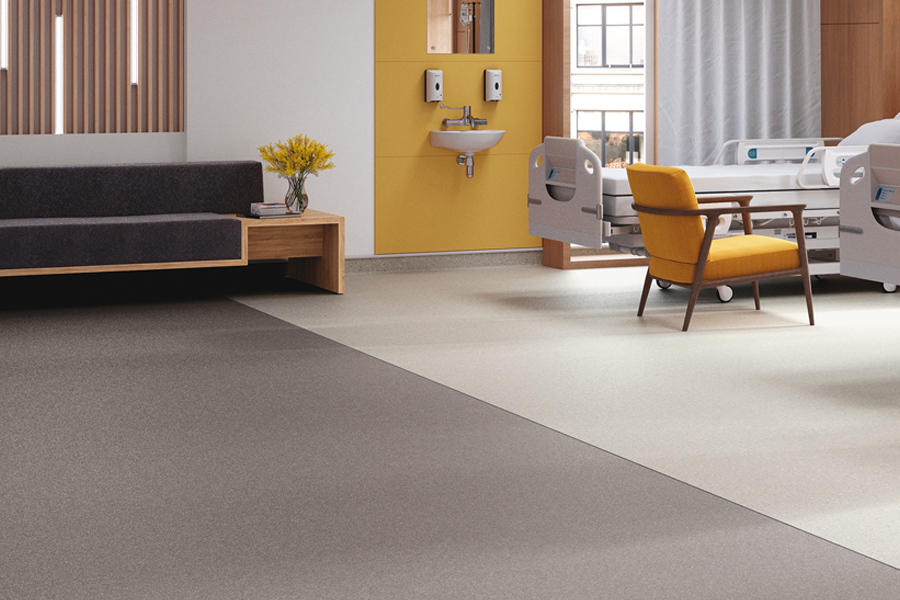
10: Provide good transition between differing floor finishes
Sudden changes of flooring material type, low to high friction or soft to hard, may cause confusion for people with dementia and may present a fall hazard. Transition between differing flooring should be as smooth as possible and pronounced changes in surface finish should be avoided. Where flooring with a raised emboss is used, ensure that its use is limited to areas where additional safety flooring is required, such as wet rooms and barefoot areas.
[Meets Design Principles 1, 7 and 11 in DH HBN 08-02]
If you're interested to learn more about how Polyflor flooring can assist in creating dementia-friendly environments, please contact us here.
You may also discover more about dementia-friendly flooring, along with some Polyflor Case Studies on our Specialist Care Brochure.
 Browse
Browse 